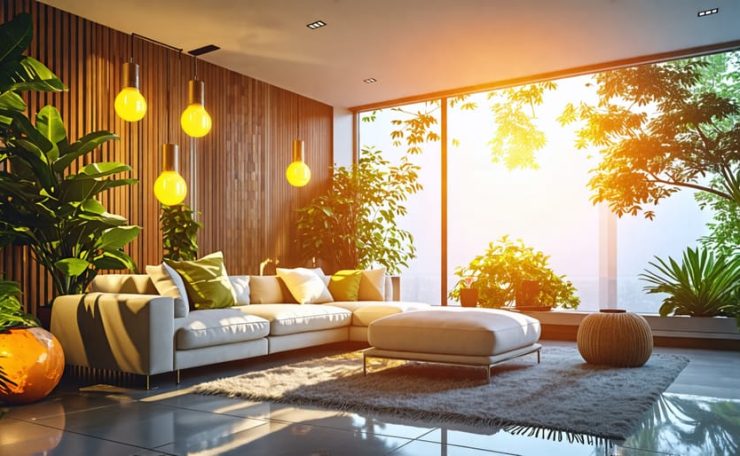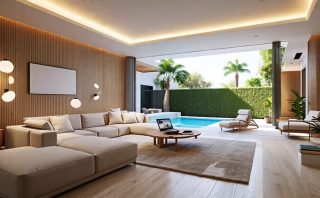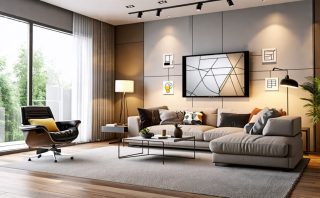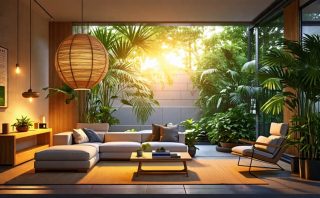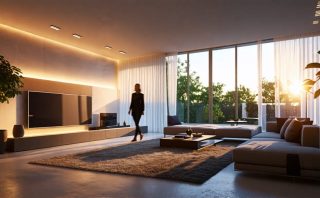Transform your space sustainably by choosing LED lights, a forward-thinking solution that blends eco-friendliness with smart design. Reduce energy consumption significantly with LEDs, slashing your electricity bills and carbon footprint in one go. Explore the versatility of LED lighting revolution, which offers diverse design possibilities to match any interior aesthetic. Select LEDs with dimming capabilities to further tailor lighting to your specific needs, maintaining ambiance while conserving energy. Opt for innovative designs that incorporate eco-friendly lighting features and position them strategically in your home or business to maximize illumination and efficiency. Embrace these efficient solutions and illuminate your interiors with confidence, taking a step towards a more sustainable and stylish future.
The Environmental Benefits of LED Lights
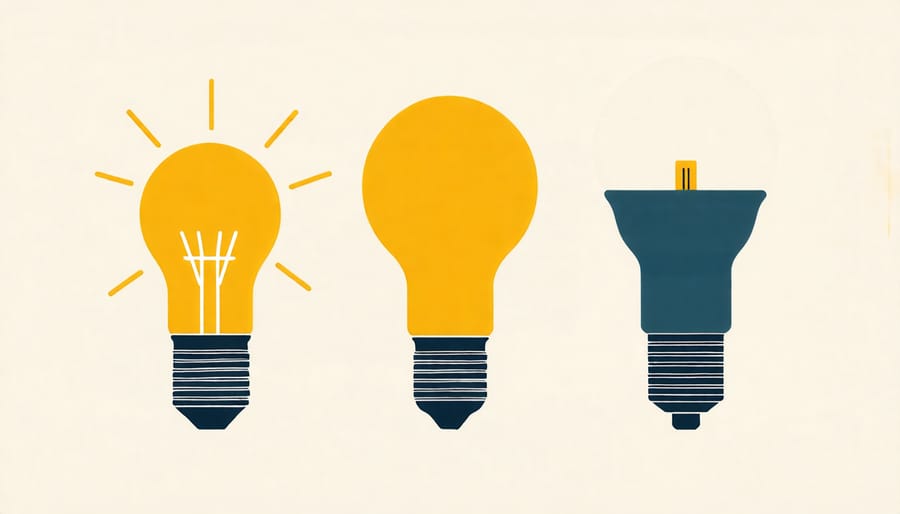
Energy Efficiency
LED lights are a shining example of energy efficiency, outperforming traditional lighting solutions like incandescent and fluorescent bulbs. Their superior energy-saving capabilities stem from the way LEDs generate light. Unlike incandescent bulbs that waste a significant portion of energy as heat, LEDs convert most of their energy into visible light, ensuring minimal energy waste. This efficiency translates to substantial cost savings on energy bills, an essential consideration for homeowners, commercial business owners, and industry professionals. Moreover, LEDs require lower wattage to produce the same lumen output as traditional bulbs, significantly decreasing energy consumption. Their remarkable lifespan, often exceeding 25,000 hours, further enhances their sustainability by reducing the frequency of replacements and, consequently, the environmental impact of production and disposal. By choosing LED lighting, individuals and businesses not only embrace eco-friendly practices but also gain a competitive edge with long-term economic benefits, highlighting their dual contribution to environmental responsibility and cost efficiency.
Reduced Carbon Footprint
LED lights significantly contribute to reducing carbon footprints due to their superior energy efficiency compared to traditional lighting options. Typically using up to 80% less energy than incandescent bulbs, LEDs convert a higher percentage of electricity into light, minimizing wasted energy and thus decreasing the demand for power from fossil fuel-based sources. This reduction in energy consumption directly translates into lower carbon dioxide emissions—a critical step in mitigating climate change impacts. Additionally, LEDs have a remarkably long lifespan, often lasting up to 25 times longer than conventional bulbs. This longevity not only reduces the frequency of replacement, leading to less waste in landfills but also conserves resources and energy used in manufacturing, transportation, and disposal processes. Homeowners, architects, and business owners alike can embrace LED lighting as a straightforward yet impactful measure to promote sustainability and protect the environment for future generations. Transitioning to LEDs not only supports eco-friendly design but also offers substantial cost savings over time, affirming their value in sustainable development.
Economic Advantages of Switching to LEDs
Lower Energy Bills
Switching to LED lighting is a sound investment for reducing energy costs. LEDs are incredibly efficient, using up to 75% less energy than traditional incandescent bulbs. This substantial reduction in energy consumption translates directly into lower electricity bills, providing noticeable savings for homeowners and businesses alike. Moreover, LEDs have a much longer lifespan, reducing the frequency of replacements and further decreasing overall costs. Their durability and efficiency make LEDs an ideal lighting solution for commercial properties that require consistent lighting, such as retail spaces and offices. Residents and businesses seeking eco-friendly and cost-effective solutions will find LED lighting a substantial contributor to energy savings, aligning with sustainable practices and supporting long-term financial efficiency. By choosing LEDs, you make a smart, sustainable choice benefiting your wallet and the environment.
Longer Lifespan
LED lights are renowned for their remarkable longevity, often lasting up to 25,000 hours or more, far exceeding the lifespan of traditional incandescent bulbs. This impressive durability means fewer replacements, significantly reducing maintenance costs and waste production. For homeowners, this translates to fewer periods without lighting, while interior designers and architects can rely on the consistent performance of LEDs in their projects without frequent interruptions. Commercial business owners and event planners benefit from the reduced downtime and long-term savings. The resilience of LED lights also supports eco-friendly initiatives by lowering the frequency of product disposal and replacement manufacturing, thus contributing to a smaller environmental footprint. Investing in LEDs not only champions sustainability but also delivers cost-effective, reliable lighting solutions.
Innovations in LED Lighting Design
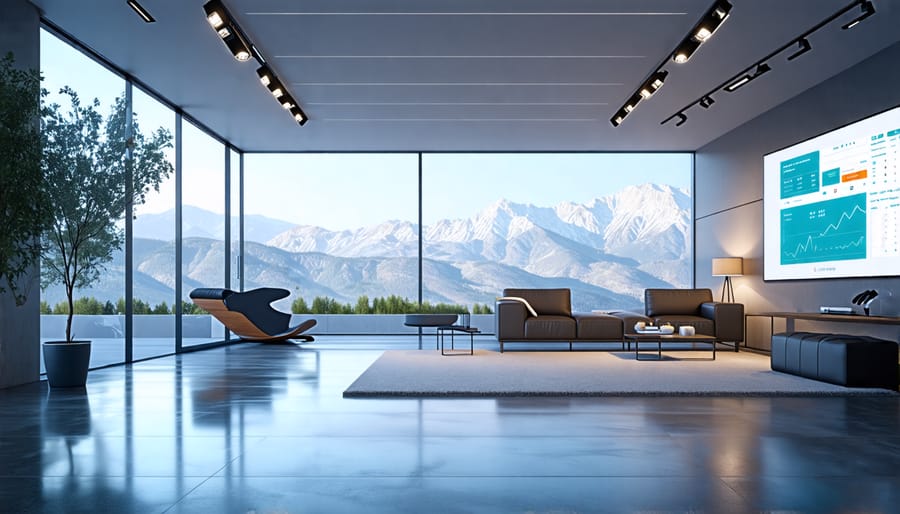
Smart LED Solutions
The integration of smart technology in LED lighting transforms traditional lighting into more customizable and efficient systems. By adopting smart LED solutions, homeowners and businesses can adjust lighting levels and hues to fit any mood or occasion while optimizing energy use. These systems can be controlled remotely through apps, allowing users to set schedules or activate sensors that respond to natural light, reducing electricity consumption significantly. For interior designers and architects, smart LEDs offer unparalleled design flexibility, making it easier to create ambient interiors that are both stylish and sustainable. Event planners and commercial business owners can benefit from the scalability and adaptability of smart LEDs, providing vibrant, cost-effective lighting that can be precisely tailored to any setting or event.
Design Versatility
LED lights offer an unparalleled level of design versatility, making them an ideal choice for various applications across different sectors. Whether you’re a homeowner looking to create an inviting ambiance or an architect seeking innovative lighting designs, LEDs can be tailored to meet your needs. With a myriad of shapes, sizes, and colors, these lights provide the flexibility to accentuate architectural details, enhance interior aesthetics, and boost functionality. For event planners and commercial spaces, LED solutions allow for dynamic lighting setups that can be easily adjusted to fit the mood or theme of any occasion. Additionally, their integration with smart lighting systems offers seamless control over lighting intensity and colors, providing not only aesthetic benefits but also energy efficiency and cost savings. This adaptability underscores the sustainable aspect of LED lights, aligning with goals for environmentally conscious designs without sacrificing creativity or quality.
Practical Tips for Implementing LED Lighting in Home Design
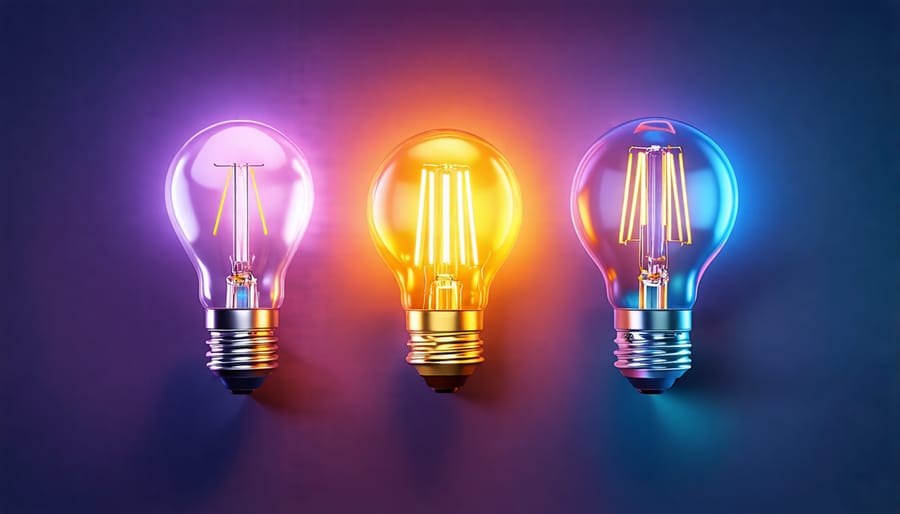
Choosing the Right LED Products
When selecting LED products, it’s important to consider your specific needs and preferences to ensure both functionality and sustainability. Begin by assessing the brightness required for your space. Measured in lumens, brighter areas like kitchens or offices benefit from higher lumens, while softer lighting in living rooms or bedrooms promotes relaxation. Next, prioritize energy efficiency by selecting LEDs with a high CRI (Color Rendering Index) and Energy Star certification, which guarantee excellent performance and reduced energy consumption. Consider the color temperature that compliments your setting; cooler tones are ideal for task-oriented spaces whereas warmer tones enhance comfort zones.
For outdoor or commercial applications, ensure the LED products are rated for durability against environmental elements. Look at warranties and average lifespan numbers, as these can differ vastly between products and impact long-term sustainability. Finally, consult with lighting specialists for a personalized recommendation that aligns with your design vision and budget, ensuring you make a sustainable and efficient choice.
DIY vs. Professional Installation
Choosing between DIY and professional installation for your LED lights involves weighing both environmental and economic factors. DIY installation can be cost-effective and offers a hands-on approach to personalizing your space, making it ideal for those with a penchant for sustainable, eco-friendly design projects. By installing LEDs yourself, you can ensure that your choices align with your specific sustainability goals while saving on labor costs.
However, professional installation brings a level of expertise and precision that can be invaluable for larger or more complex projects, such as commercial spaces or custom interior designs. Professionals are equipped with knowledge about the latest sustainable technologies and can offer personalized consultations to ensure optimal energy efficiency and design impact. Additionally, they can navigate any technical challenges, ensuring a smooth and efficient installation process.
Ultimately, the choice depends on the scale of your project, your technical proficiency, and your sustainability priorities. Both options offer unique benefits, whether prioritizing budgetary concerns with DIY or seeking the precision and insight that professional services provide.
Conclusion
In conclusion, the undeniable benefits of LED lighting make it an exceptional choice for those seeking sustainable, efficient, and versatile lighting solutions. As we have explored, LEDs offer substantial environmental benefits due to their energy efficiency and long lifespan, significantly reducing carbon footprints and lowering energy costs. These advantages not only appeal to eco-conscious homeowners and businesses but also promise meaningful cost savings over time, offering a sound return on investment.
Furthermore, the adaptability of LED technology has transformed it into a tool of choice for interior designers and architects, allowing for creative and dynamic lighting environments that can enhance any space. Whether you are an event planner aiming to create memorable atmospheres or a commercial business owner looking to modernize your establishment, the diverse range of LED products available can cater to various aesthetic and functional needs.
Moreover, personalized consultations can help in selecting the best LED products tailored to specific projects, ensuring optimized performance and satisfaction. By choosing LED lighting, you embrace a sustainable future while benefiting from innovative design flexibility and long-term economic advantages.
As you consider your lighting options, remember that every LED installation contributes to a more sustainable planet, which aligns with the crucial global movement towards sustainability. Opting for LED lighting is not just a trend; it’s a responsible decision that supports environmental conservation, economic efficiency, and the creation of beautiful, well-lit spaces. Embrace the future of lighting today and take your first step towards a brighter, more sustainable tomorrow.

